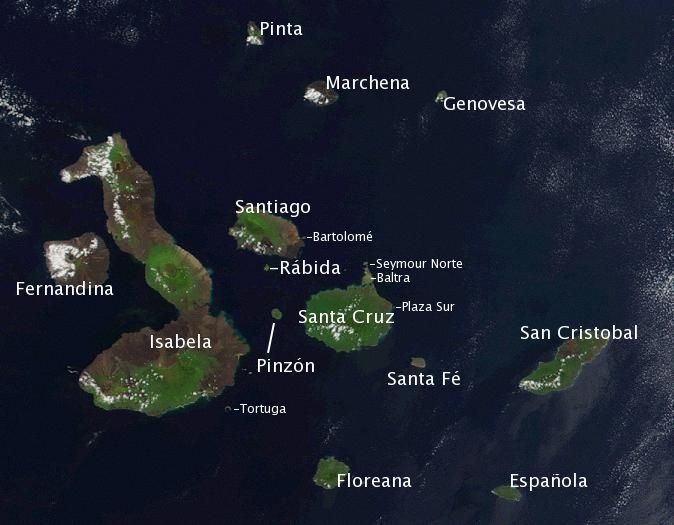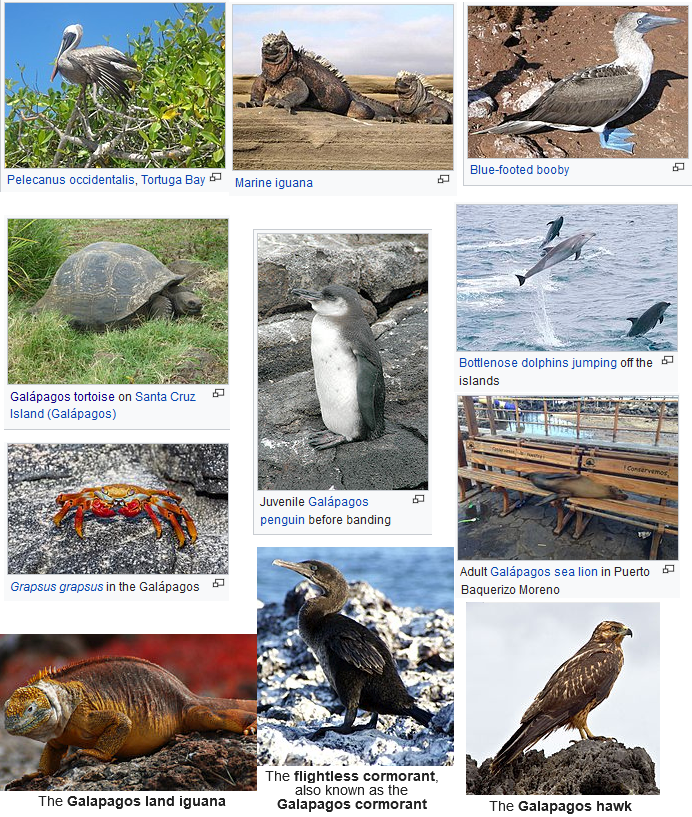The Galapagos Islands are a group of volcanic islands that are part of the Republic of Ecuador. The islands are known for a large number of endemic species and were studied by Charles Darwin during the second HMS Beagle voyage. His observations and collections contributed to Darwin’s theory of evolution by natural selection.
The Galapagos Islands and surrounding waters form the Galapagos Province of Ecuador, the Galapagos National Park and the Galapagos Marine Reserve. The main language on the islands is Spanish. The islands have just over 25,000 inhabitants. Five islands are inhabited: Baltra, Floreana, Isabela, San Cristobal and Santa Cruz. The capital is Puerto Baquerizo Moreno. There are a total of 21 islands. The area is 7880km2, the highest peak is 1707m. Volcanism has been going on in the Galapagos Islands for at least 20 million years, and maybe longer. The islands are located in the eastern Pacific, 973 km off the west coast of South America.

The nearest land mass is mainland Ecuador, the country to which they belong, 926 km to the east. The group consists of 18 main islands, 3 smaller islands and 107 rocks and islets.
The Galapagos Islands were marked under UNESCO as part of the world cultural heritage in 1978, due to their exceptional importance and uniqueness in the world.
At the end of June 2018, the Sierra Negra, one of the five volcanoes on Isabela and one of the most active in the Galapagos archipelago, began to erupt for the first time since 2005. The lava that flowed and was ejected, rushed towards the shore, which caused the evacuation of about fifty inhabitants nearby and restricted access to tourists.
The climate is tropical, with some specifics. Although the islands are located at the equator, the Humboldt current brings cold water to them, causing frequent clouds for most of the year. Weather changes as altitude increases on large islands. The temperature decreases gradually with altitude, while precipitation increases due to condensation of moisture in the clouds on the slopes. There is a large range of precipitation from one place to another, not only in height, but also depending on the location of the island, but also with the seasons. So that the Galapagos is unique not only in the animals that live only on it, and plants and islands, but also in the climate, each island has its own subclimate.
The Galapagos became a national park in 1959, and tourism began in the 1960s, imposing several restrictions on the human population already living on the island. However, opportunities in tourism, fishing and the agricultural industry have attracted a mass of poor fishermen and farmers from continental Ecuador. Violent clashes broke out between locals and the Galapagos National Park Service during the 1990s and 2000s, including the capture and killing of giant tortoises and the holding of staff in the Galapagos National Park hostage to obtain higher annual sea cucumber quotas.
Here are some species that live only in the Galapagos:

HERE IS OUR GALAPAGOS ISLAND GALLERY https://tropicalislands.net/galapagos-islands-gallery/

